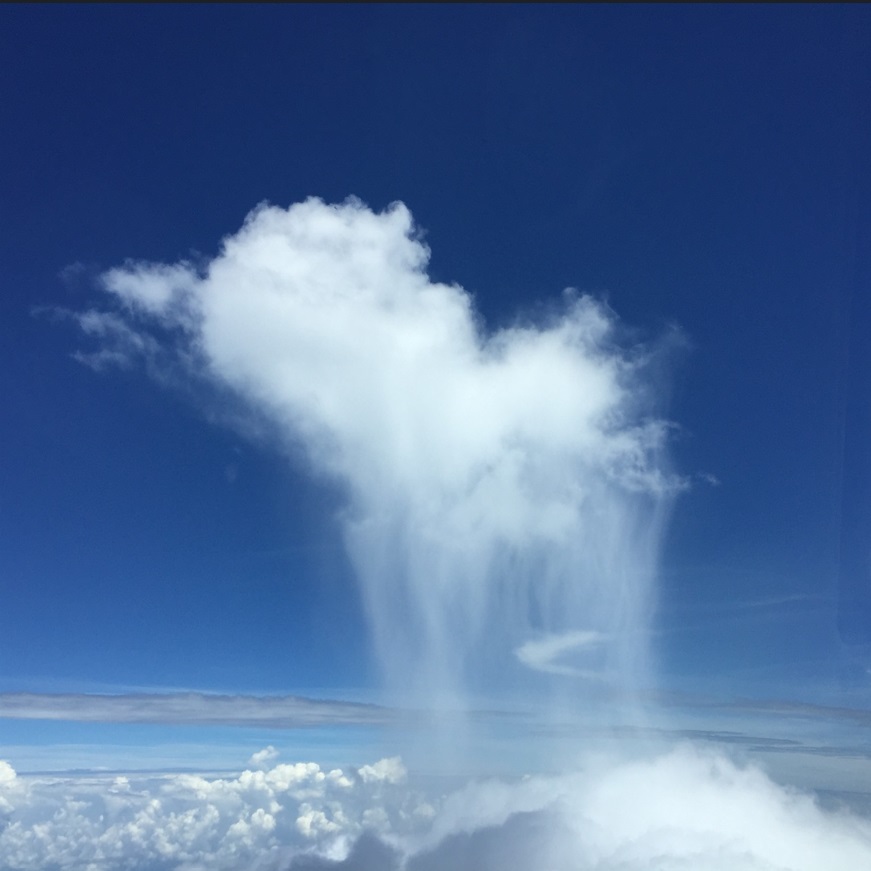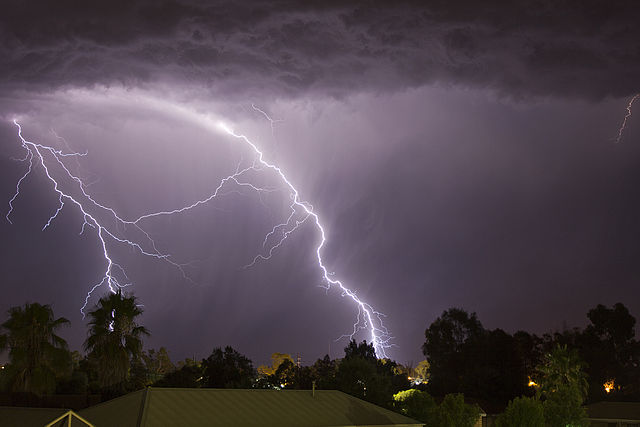Thunderstorms are typically associated with heavy rain, lightning, and sometimes hail. However, not all thunderstorms bring rain to the ground. Some of the most fascinating and dangerous weather phenomena are known as “dry thunderstorms.” These storms are responsible for sparking wildfires and can have serious implications for arid and fire-prone regions.
This blog post will explore how dry thunderstorms form, where they typically occur, their environmental impact, and safety tips for those living in affected areas.
What is a Dry Thunderstorm?
A dry thunderstorm is a weather event where lightning and thunder are present, but little to no rain reaches the ground. While rain may fall from the clouds, it often evaporates before hitting the surface due to hot, dry air below. This process is known as “virga.” Even without rain on the ground, these storms can still bring strong winds and lightning, impacting the environment, especially in wildfire-prone areas.
 Source: friedtomatoes via Cloud Appreciation Society
Source: friedtomatoes via Cloud Appreciation Society
What Causes Dry Thunderstorms?
Dry thunderstorms result from a unique set of atmospheric conditions. Here’s a step-by-step breakdown of the process:
- Moisture in the upper atmosphere. Dry thunderstorms begin like any other thunderstorm, with warm, moist air rising to form cumulonimbus clouds. Moisture condenses as the air rises, forming water droplets and, eventually, precipitation within the cloud.
- Dry air below the clouds. Unlike a typical thunderstorm, dry thunderstorms form in areas where the lower atmosphere (closer to the ground) is extremely dry. This dry air often results from high-pressure systems that prevent moisture from accumulating at ground level.
- Evaporation of rain (virga). As rain begins to fall from the cumulonimbus cloud, it passes through the dry layer of air below. The dry air causes the raindrops to evaporate before reaching the ground, resulting in the appearance of streaky “virga” trailing from the cloud base.
- Lightning without rain. Despite the lack of rain, the storm’s electrical activity continues, producing lightning. As there’s no rain to accompany it, lightning strikes can hit dry, flammable vegetation, igniting wildfires.
- Strong downdraft winds. In addition to lightning, dry thunderstorms are associated with strong downdraft winds, often called “dry microbursts.” These sudden, powerful bursts of wind can cause wildfires to spread faster.
 Source: Avron Tal via Chess in the Air
Source: Avron Tal via Chess in the Air
Where Do Dry Thunderstorms Happen?
Dry thunderstorms are most common in regions with hot, arid climates. These areas have the perfect combination of upper-level moisture and lower-level dry air. Some of the most affected regions include:
- The Western United States. States like California, Nevada, Arizona, New Mexico, and parts of Oregon experience dry thunderstorms, particularly during summer. These areas are prone to wildfires, and dry thunderstorms play a significant role in igniting them.
- Australia. The arid, bushfire-prone regions of Australia frequently experience dry thunderstorms, especially during the country’s fire season, which runs from late spring to early autumn.
 Source: Bidgee, CC BY-SA 3.0 AU, via Wikimedia Commons
Source: Bidgee, CC BY-SA 3.0 AU, via Wikimedia Commons
- Southwestern Canada. Parts of British Columbia and Alberta experience dry thunderstorms during their wildfire season.
- Southern Europe. In Mediterranean climates with hot, dry summers, dry thunderstorms can occur and contribute to wildfires, particularly in countries like Spain, Italy, and Greece.
- Parts of Africa and South America. Dry thunderstorms can also develop in regions where arid savannas meet areas of higher humidity, making parts of Africa and South America susceptible to wildfire-starting storms.
Dry Thunderstorms and Climate Change
Climate change may influence the frequency and intensity of dry thunderstorms. As temperatures rise, more regions experience prolonged droughts, which create the dry conditions necessary for virga formation. Warmer temperatures also increase the likelihood of lightning-producing thunderstorms, which, when combined with drier landscapes, can lead to more frequent wildfire outbreaks.
For example, in the western United States, rising temperatures have extended wildfire seasons and intensified fire behavior. Studies show that as climate change progresses, the favorable conditions for dry thunderstorms, such as hot, dry air near the ground, will become more frequent.
Conclusion
Dry thunderstorms are a unique and dangerous weather phenomenon. While they’re fascinating from a meteorological perspective, their ability to ignite wildfires makes them a serious concern for fire-prone regions worldwide. Understanding how dry thunderstorms form, where they occur, and how they impact the environment is crucial for raising awareness and preparing for their effects.
If you live in an area prone to dry thunderstorms, take steps to protect your home and family. Stay informed about weather forecasts, prepare for potential wildfires, and have an emergency plan in place. As climate change continues to influence weather patterns, dry thunderstorms may become more frequent, making preparedness all the more essential.






